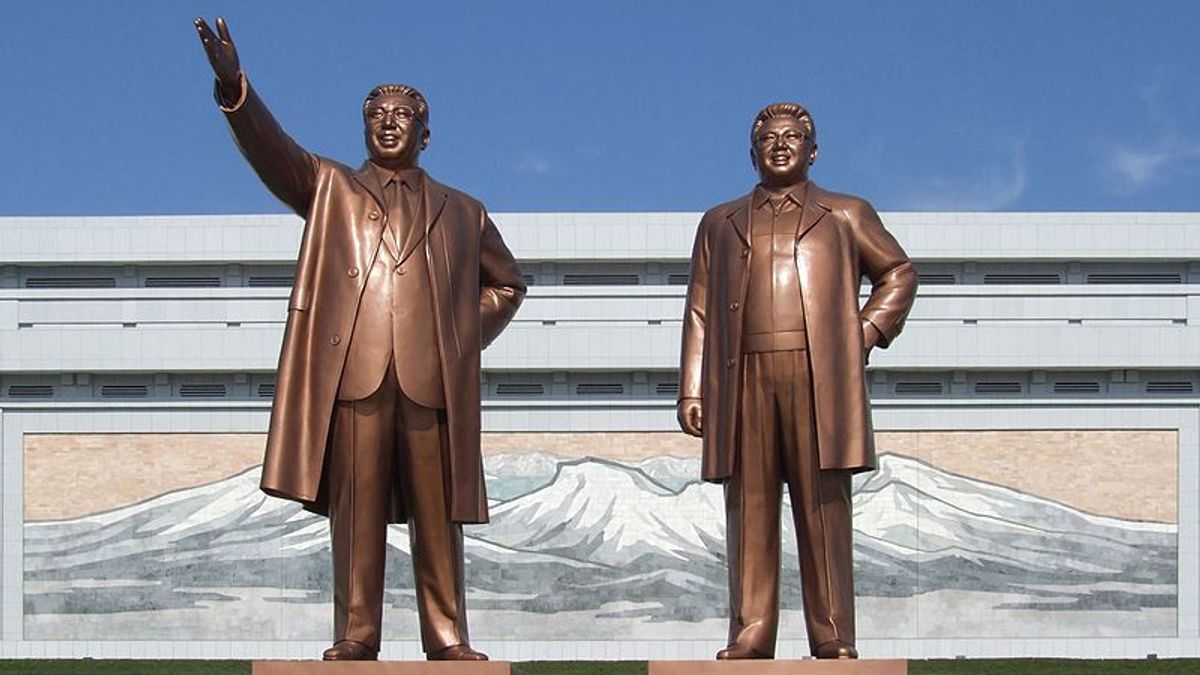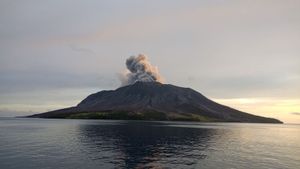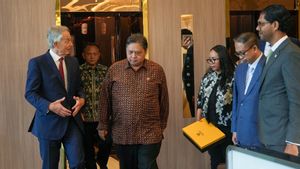
JAKARTA - On September 9, 1948, Kim Il-sung declared the founding of the Democratic People's Republic of Korea. Thus, Kim Il-sung also became the first leader of North Korea (North Korea). Less than a month earlier, on August 15, 1948, South Korea first declared the founding of the Republic of Korea.
To quote Britannica, during World War II, Kim Il-sung led a Korean contingent in the Soviet Union army. After Japan's surrender in 1945, Korea was effectively divided between the Soviet-occupied north and the US-backed south. At that time, Kim Il-sung along with other Koreans trained by the Soviets established a temporary communist government under Soviet auspices.
Kim Il-sung has been active in communist organizations since his youth. While still a student, he joined a communist youth organization. Kim Il-sung was arrested and imprisoned for his activities with the group in 1929–1930.
After Kim Il-sung was released from prison, he joined a Korean guerrilla group against the Japanese occupation in the 1930s. Kim Il-sung's moves caught the attention of the Soviet military authorities, who sent him to the Soviet Union for military and political training. There he joined the local Communist Party. Communist blood flowed in Kim Il-sung's body until the end of his life.
As head of state, Kim Il-sung crushed any remaining domestic opposition and eliminated his last rival for power in the Labor Party. He became the absolute ruler of his country and began to turn North Korea into a violent, militaristic and highly organized society whose goals were industrialization and the reunification of the Korean Peninsula under North Korean rule.
Kim Il-sung also introduced a philosophy of juche or "self-reliance," in which North Korea tries to develop its economy with little or no help from foreign countries. North Korea's state-run economy grew rapidly in the 1950s and 60s but eventually stagnated, with catastrophic food shortages occurring in the early 1990s.
The cult that was all sponsored by Kim Il-sung was part of a highly effective propaganda system that allowed him to rule without challenge for 46 years. In his foreign policy, he maintained close relations with the Soviet Union and China.

Hoping to reunite Korea by force, Kim Il-sung launched the invasion of South Korea (South Korea) in 1950, thus triggering the Korean War. However, his attempts to expand his power there were rebuffed by US and UN forces. The invasion by North Korea was heavily supported by China and the Soviets.
The Korean War began June 25, 1950, with 75,000 troops from the North Korean People's Army flowing across the 38th parallel, the boundary between the Democratic People's Republic of Korea and the Republic of Korea. This invasion was the first military action of the Cold War.
As discussed in the VOI article entitled The Less Highlighted Korean War Although More Deadly than WWII and the Vietnam Invasion, in July 1950 US troops joined the war on behalf of South Korea. According to US officials, the war was against the forces of international communism.
After a series of attacks on the 38th parallel, the fighting briefly stalled but the number of casualties continued to rise. The war did nothing for the parties. Meanwhile, US officials who support South Korea continue to form a kind of truce with North Korea.

America then had other concerns that the Korean War would become a wider war with the Soviets and China, even as some had warned: World War III. This was something the then US President Harry S. Truman and his advisers clearly did not want.
Finally, in July 1953, the Korean War ended. In all, some 5 million soldiers and civilians were lost in what many in the US call the 'forgotten war' due to the lack of attention it received compared to the conflicts of World Wars I and II and the Vietnam War. The Korean War's civilian casualty rate was higher than that of World War II and the Vietnam War. Until now, the Korean Peninsula is still divided into two countries.
*Read other information about TODAY's HISTORY or read other interesting articles from Putri Ainur Islam.
TODAY'S HISTORY More
The English, Chinese, Japanese, Arabic, and French versions are automatically generated by the AI. So there may still be inaccuracies in translating, please always see Indonesian as our main language. (system supported by DigitalSiber.id)










